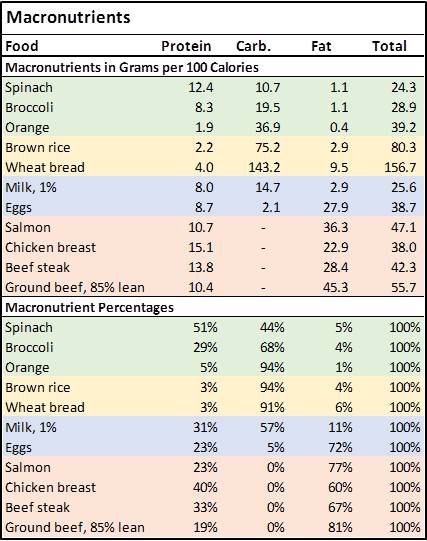At Last! A Guest Blog! How Do Vegetarians Get Their Protein?
May 28, 2016
I teach a course at U.C. Berkeley, “Presenting Quantitative Data Effectively” (that sounds more academic than “Painting with Numbers”). For the course’s term paper, students write a blog for the “Painting with Numbers” website. The subject should be one they care about and are interested in. The text must be 500 words or less and include at least one table and one graph created by the student. And finally, the numbers presentation must follow the rules and suggestions laid out in my book, Painting with Numbers, while avoiding all of the Deadly Sins I identify.
I don’t always get a term paper that I choose to post, but this term one of my students, Lyman Yip, wrote a terrific piece about whether, and how, vegans get enough protein. I’ve posted it below; I hope you enjoy it. Here’s what I really like about Lyman’s work:
- The numbers presentations – the tables and the graph – are straightforward and easy to understand.
- The tables and the graph look good and use visual effects – i.e., text effects, white space, cell borders, colors, etc. – to make the information easy to understand, and not just for the heck of it.
- The text and the numbers presentations work well together – Lyman explains how to read the numbers, and the numbers support the points he makes in the text.
- The text is well-written and well-organized.
- The subject is one that many will be interested and, most important, that Lyman clearly has a deep personal interest in himself.
If you are a finance professional, ask yourself this: Do your – or your staff’s, if you’re a manager – technical communications meet the above criteria? There is more, much more, to effective financial communications than just getting the numbers right.
“Painting with Numbers” is my effort to get people to focus on making numbers understandable. I welcome your feedback and your favorite examples. Follow me on twitter at @RandallBolten.
* * * * * * * * * * * * * * * * * * * * * * * * * * * * * * * * *
How Do Vegetarians Get Their Protein?
By Lyman Yip
As a vegetarian, and mostly vegan, I get asked “where do you get your protein?” often. It seems the general public believes those who don’t eat meat either don’t get enough protein or have to monitor carefully what they eat to get enough.
Protein is one of three necessary macronutrients in food, the others being carbohydrate and fat. Macronutrients are substances that provide calories or energy, and are needed for growth, metabolism, and other body functions. “Macro” means large, and thus macronutrients are nutrients that are needed in large amounts.
The following is the recommended percentage range of total daily calories for each macronutrient, from the National Academy of Sciences:

Very few cases exist of protein deficiency in the industrialized world. So few that there isn’t a formal medical term for it, though Wikipedia cites the term “kwashiorkor” for “protein malnutrition predominant.” Cases of kwashiorkor occur in areas of famine or poor food supply, and are rare in the developed world.
It’s estimated that 5-10% of the U.S. population is vegetarian or vegan. We’d hear about protein deficiency in the news if it was common in this group. Vegetarian groups would heed warnings to their constituencies if this was a real concern.
The answer I give to the question? If one eats enough, one gets enough protein.
Using data from the USDA National Nutrient Database, I compared the macronutrient composition of several common foods:

Per calorie, spinach and broccoli are 51% and 29% protein, respectively. Compare this to chicken breast and ground beef (85% lean) of 40% and 19%, respectively. As mentioned previously, the recommended range for protein for adults is 10-35% of total calories, so clearly there’s plenty of protein available in plant-based foods.
The percentage composition doesn’t tell all though. The below table shows for every 100 calories the grams of macronutrients, and the calculation of the percentages in the graph above:

In absolute terms, you get more protein from animal products than plant-based foods. You also get a lot of fat and little or no carbohydrates. Balance is in order for a healthy macronutrient dietary mix.
The per-100 calories metric can be misleading, as meat is calorically dense. To get 2,000 calories you would need to eat the following amount, per food:

It takes 19.2 pounds of spinach or 13.0 pounds of broccoli to get to 2,000 calories, vs. 2.2 pounds of chicken breast or 1.8 pounds of ground beef.
Few get their calories from one food, let alone 19 pounds of it in a day! The key to healthy eating is moderation, balance, and variety, even if some foods are considered “superfoods” or “healthy.” Too much of a good thing exists.
Where do I get my protein? From vegetables, fruits, grains, and other plant-based foods in amounts where I feel satiated and without focusing on protein-rich foods. That is, from eating enough.
Other Topics


